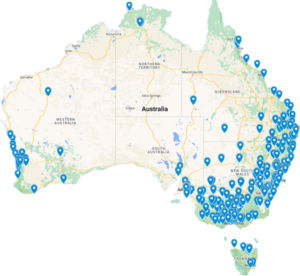New Workplace Exposure Limits (WELs): What They Mean for Your Industry
Safe Work Australia is replacing Workplace Exposure Standards (WES) with Workplace Exposure Limits (WELs) — legally enforceable value that must not be exceeded, so far as is reasonably practicable, after applying all feasible control measures. The transition ends on 30 November 2026 and WELs apply from 1 December 2026.
This article highlights high-impact changes relevant to food & beverage manufacturers, transport depots, council workshops, road crews and timber processors. It’s not an exhaustive list — additional substances and notation changes also apply.
“We’re seeing a surge in enquiries from proactive employers who know they first need to confirm actual exposure levels — and they’ll need time to implement engineering changes before WELs become enforceable.”
From Guidance to Enforceable Limits
Under WELs, each value is an upper bound (8-hour TWA unless otherwise stated). Exceeding a WEL is a compliance breach — PPE does not make an exceedance compliant. Employers must follow the hierarchy of control:
- Eliminate the hazard
- Substitute with a safer material or process
- Isolate the source
- Engineer controls (extraction, ventilation, enclosures)
- Administrative controls (training, rotation, maintenance)
- PPE — last resort or interim only
Key WEL Changes Affecting Common Workplaces
Flour Dust — Food Manufacturing & Bakeries
New WEL: 0.5 mg/m³ (8-hour TWA, inhalable)
Flour dust now has a dedicated limit (previously captured under 10 mg/m³ generic inhalable dust). The new threshold is 20× tighter, reflecting strong evidence for occupational asthma and sensitisation. Review extraction, housekeeping and process controls.
Grain Dust — Silos, Feedmills & Bulk Handling
New WEL: 1.5 mg/m³ (8-hour TWA, inhalable)
Grain dust now carries a defined limit, replacing reliance on nuisance-dust benchmarks. Expect stricter requirements during transfer, loading and packaging — particularly in enclosed or poorly ventilated areas.
Diesel Exhaust — Transport Depots & Council Workshops
New WEL: 0.01 mg/m³ (8-hour TWA, respirable elemental carbon)
Diesel particulate matter is explicitly regulated via REC. Indoor and semi-enclosed operations (bus depots, plant rooms, logistics workshops) should validate ventilation rates and undertake formal exposure monitoring.
Bitumen Fumes — Road & Asphalt Crews
New WEL: 0.5 mg/m³ (8-hour TWA, inhalable)
A ten-fold reduction from the former 5 mg/m³ standard. Review fume capture at sources, mobile extraction on paving plant, vehicle cabin filtration, and worker rotation procedures.
Wood Dust — Timber & Joinery Workshops
New WEL: 2 mg/m³ (8-hour TWA, inhalable)
WES values were 5 mg/m³ (softwood, STEL 10) and 1 mg/m³ (hardwood); WEL introduces a single combined limit of 2 mg/m³. This tightens softwood operations and raises the hardwood ceiling. Health surveillance remains essential due to sensitisation risk.
Beyond These Examples
These are not the only changes. The WEL program adds 30+ substances, revises numerous limits, updates notations (DSEN, RSEN, OTO) and reclassifies certain carcinogens as non-threshold (no safe level). Every employer should review their entire chemical and dust inventory, not just the examples above.
What Employers Should Do Now
- Identify airborne contaminants across your sites.
- Assess exposures against the new WEL values.
- Upgrade ventilation and process controls where needed.
- Implement/refresh health surveillance for sensitiser/carcinogen risks.
- Plan early — leave time for engineering changes before Dec 2026.
How Mobile Screening Can Help
We have staff across Australia and our occupational hygiene service has been helping employers prepare for and comply with Australia’s new Workplace Exposure Limits:
- On-site air quality and exposure monitoring — compliant with WEL sampling methods for dusts, fumes and diesel particulate.
- Engineering, administrative and PPE guidance — practical strategies to reduce exposures and verify control effectiveness.
- Compliance documentation and reporting — formatted for regulator and auditor readiness under AS/NZS 1269.4.
- Spirometry — onsite and in accord with ATS/ERS 2019 Standard.
Give us a call on 1300 84 84 80 or request a quote here.



